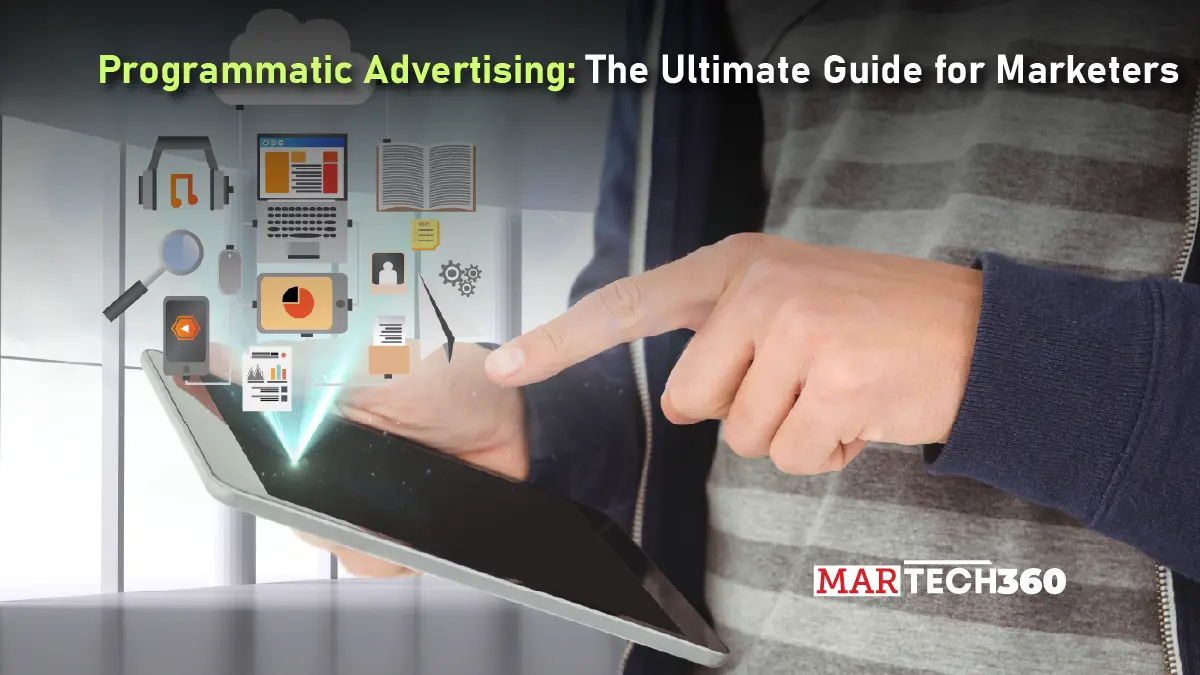Advertising isn’t just evolving, it’s inflating. 2025 is shaping up to be a tough year for marketers as media costs rise faster than expected. The World Federation of Advertisers projects that nine out of ten top global markets will see sharper media price inflation in 2025 than in 2024. In this environment, programmatic advertising isn’t just another tool; it’s a lifeline for efficiency and precision.
This guide breaks down what programmatic advertising really is, how it works today, the strategies that separate winners from laggards, and the trends shaping its future.
What is Programmatic Advertising?
Programmatic advertising is the automated buying and selling of digital ad space. Instead of manual negotiations and guesswork, it uses algorithms, data, and AI to decide where and when ads should run, at scale and in real time.
But the definition has expanded in 2025. With Apple’s App Tracking Transparency (ATT) framework in full swing, apps must now ask users for explicit permission to track activity across apps and websites. If users decline, the device’s advertising identifier is blocked. This single change has forced advertisers to rethink how programmatic targeting works, pushing greater reliance on first-party data and privacy-compliant audience strategies.
Programmatic Advertising: How Does It Work?
Programmatic advertising runs on a network of connected platforms that trade impressions in real time. Here’s how the system fits together:
Supply-side platforms (SSPs): Publishers list their available ad space.
Demand-side platforms (DSPs): Advertisers use DSPs to bid on that space, deciding how much an impression is worth.
Ad exchanges: The marketplace where SSPs and DSPs transact.
Ad servers: Once an ad wins the auction, servers deliver it to the user’s screen.
Data management platforms (DMPs): These collect and structure audience data, helping advertisers refine targeting before and during campaigns.
The flow looks like this: a publisher’s SSP makes inventory available → advertisers compete through DSPs using audience data from a DMP → an ad exchange runs the auction in milliseconds → the highest bidder wins → an ad server pushes the creative live.
This process now underpins the majority of digital display spend. SEMrush’s 2025 advertising report highlights that programmatic buying has become the default across channels, with mobile and video formats showing the strongest growth. In other words, most ads you encounter today whether inside an app, on a streaming platform, or across the open web, were placed programmatically.
Also Read: Self Serve Advertising– A New Approach In The World Of Online Advertising
Best Programmatic Advertising Examples
 Programmatic isn’t just for publishers or quick-service restaurants anymore. In 2025 the most interesting use cases are emerging inside retail and commerce media networks.
Programmatic isn’t just for publishers or quick-service restaurants anymore. In 2025 the most interesting use cases are emerging inside retail and commerce media networks.
McKinsey’s May 2025 analysis found that 74% of marketers want retail/commerce media networks to play a bigger role in their mix, even as 54% plan to cut overall ad spend. Why? Because these networks combine shopper data with programmatic automation, allowing brands to reach consumers at the point of decision with far greater precision.
Think of a grocery chain selling programmatic slots on its app, or an e-commerce giant offering ad placements tied directly to purchase behavior. The model doesn’t just deliver impressions; it closes the loop between ad exposure and transaction. That’s why commerce media is quickly becoming programmatic most high-value playground.
Winning Strategies for Programmatic Advertising Success
Understand Your Audience
Precise targeting is the heart of programmatic. Collect first-party insights, understand behavior patterns, and segment audiences thoughtfully.
Define Clear Objectives and KPIs
Don’t just run ads; measure success. KPIs should track meaningful outcomes, not just impressions or clicks.
Select the Right Technology Partners
DSPs, SSPs, and ad exchanges vary in quality and transparency. Choose partners that align with your efficiency goals.
Leverage Data Intelligently
Data drives smarter decisions, but 2025 requires a privacy-first mindset. Combine first-party signals with compliant third-party insights to optimize targeting.
Allocate Budgets for Testing
Experimentation is non-negotiable. Set aside funds to trial new creatives, formats, and channels to see what truly resonates.
Monitor for Waste and Fraud
Programmatic is efficient, but efficiency isn’t automatic. The WFA’s 2025 summary of ANA’s benchmark study shows that for every $1,000 spent programmatically, $439 now actually reaches consumers, reflecting a 7.9% improvement in efficiency. Vigilant monitoring ensures you’re not inflating costs with non-human traffic or misaligned placements.
Ensure Cross-Channel Integration
Programmatic doesn’t operate in isolation. Coordinate campaigns across display, mobile, video, and emerging retail media channels to maintain a coherent brand experience.
Programmatic Advertising Trends
 Programmatic is no longer just automated bidding; AI predicts user behavior and dynamically adjusts creative and placements. Modern technologies refine programmatic buying, enhancing both targeting precision and campaign security.
Programmatic is no longer just automated bidding; AI predicts user behavior and dynamically adjusts creative and placements. Modern technologies refine programmatic buying, enhancing both targeting precision and campaign security.
AI and Machine Learning Drive Smarter Targeting
Programmatic is no longer just automated bidding; AI predicts user behavior and dynamically adjusts creative and placements. According to Think with Google 2025 marketing insights, AI-powered tools are increasingly being used to forecast trends, optimize bids in real time, and refine marketing mix models (MMM) for more precise performance measurement.
Privacy and User Choice Take Center Stage
Cookies aren’t dead, but 2025 has redefined how they’re used. Google’s April 2025 Privacy Sandbox update confirmed a user-choice model, where consumers have greater control over tracking, and new APIs (Topics, Protected Audience, Attribution Reporting) are being rolled out. Advertisers must balance personalization with privacy, leveraging compliant approaches that build trust while still reaching intended audiences.
Outcome-Driven Measurement
Clicks and impressions are table stakes. Modern programmatic campaigns focus on tangible outcomes such as conversions, subscriptions, and store visits. AI-driven measurement frameworks now allow marketers to connect programmatic exposure to real-world business results, making campaigns more accountable.
Attention and Engagement Metrics
Short attention spans demand smarter measurement. Beyond view ability, marketers are tracking engagement quality on how users interact with content, dwell time, and cross-device attention, ensuring that programmatic impressions aren’t just seen, but also absorbed.
Concluding Thoughts
Programmatic advertising has evolved from a promising tool into a cornerstone of modern marketing strategy. Efficiency, precision, and automation now define the landscape. The WFA’s 2025 summary of ANA’s programmatic benchmark study highlights measurable gains in ad-spend efficiency.
At the same time, privacy and user choice have become central. Apple’s ATT framework and Google’s Privacy Sandbox 2025 updates reinforce that advertisers must balance personalization with compliance, leveraging privacy-first strategies that build trust while still delivering impact.
The industry’s focus is shifting toward retail and commerce media networks, with McKinsey reporting that marketers plan to lean into these channels in 2025, even as overall ad budgets tighten. Combining these high-value channels with AI-driven targeting and outcome-focused measurement ensures campaigns are not only seen but also drive tangible results.
As technology continues to advance and consumer expectations evolve, businesses that integrate efficiency, privacy, AI, and commerce media will stay ahead. Programmatic advertising in 2025 isn’t just about placing ads, it’s about creating meaningful connections, optimizing spend, and generating real-world outcomes across every touchpoint.


Comments are closed.